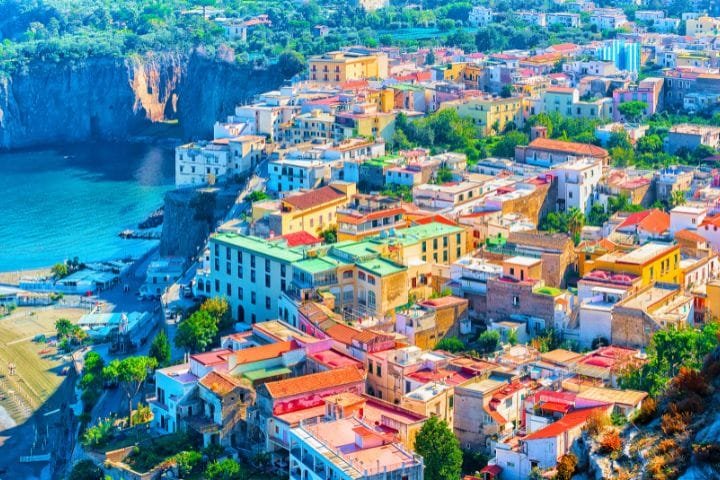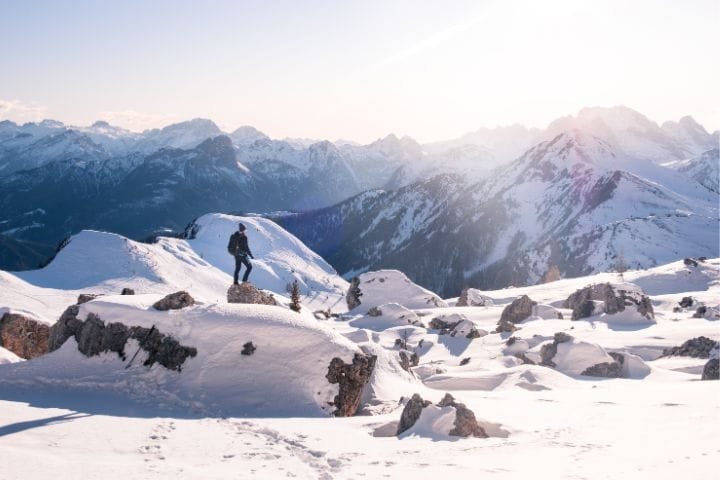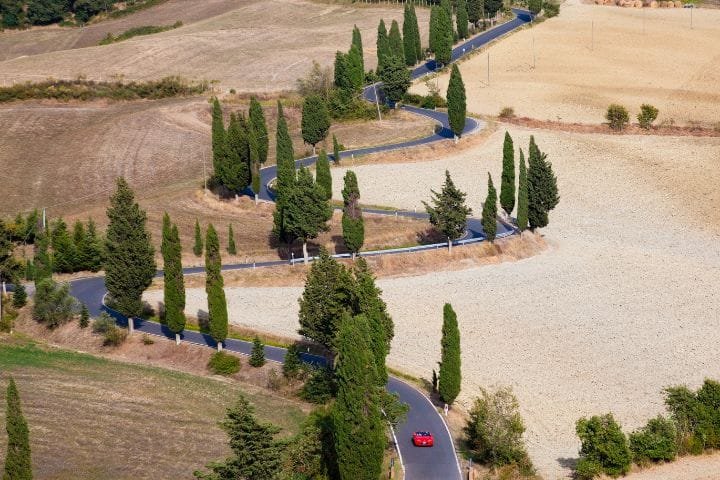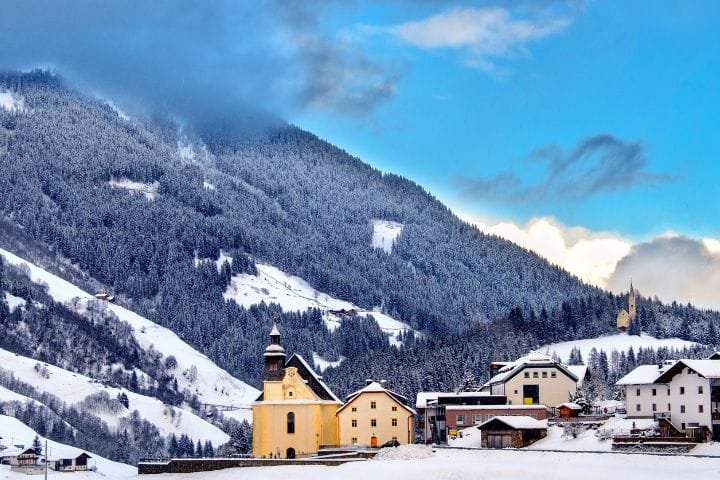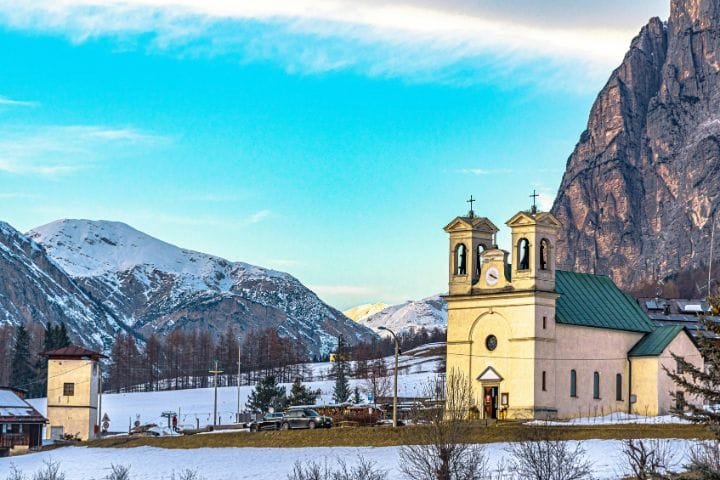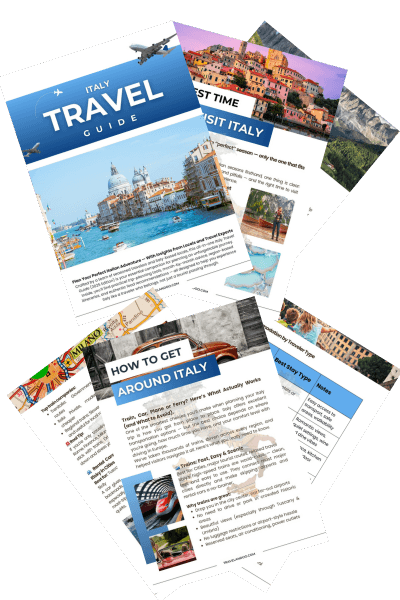Amalfi Coast 7-Day Itinerary: The Ultimate Week-Long Adventure (2025 Guide)

by Mary | Last Updated December 17, 2025
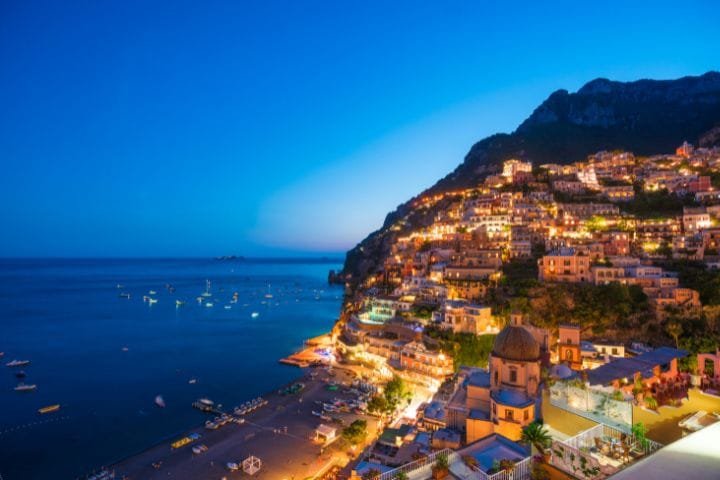
Planning a week-long adventure along Italy’s most spectacular coastline and wondering how to make every day count? After visiting the Amalfi Coast countless times over the past fifteen years – sometimes as a quick weekend getaway from other European cities, sometimes for extended stays exploring every hidden cove and clifftop village- I can tell you that seven days provides the perfect amount of time to truly experience this UNESCO World Heritage coastline without feeling rushed.
The Amalfi Coast delivers everything you could dream of from a Mediterranean adventure: dramatic cliffside roads that rank among the world’s most scenic drives, postcard-perfect villages perched impossibly on steep slopes, hidden beaches accessible only by boat or challenging hikes.
World-class cuisine that showcases the best of southern Italian flavors, and that intoxicating combination of natural beauty and authentic culture that makes this region irresistible to travelers worldwide.
Whether you’re seeking romantic sunset dinners overlooking the Tyrrhenian Sea, adventurous hiking along ancient coastal paths, or cultural discoveries in medieval churches and noble palaces, a well-planned Amalfi Coast 7-Day Itinerary delivers experiences that will create memories lasting a lifetime.
🚗 Planning an Amalfi Coast Road Trip
If you’re exploring the Amalfi Coast by car, understanding local driving rules and road conditions is essential.
- Start with the main Italy road trip planning guide → How to Plan a Perfect Italy Road Trip
- Decide whether driving the coast is right for you → Is It Worth Driving the Amalfi Coast?
Day 1: Arrival and Positano Exploration
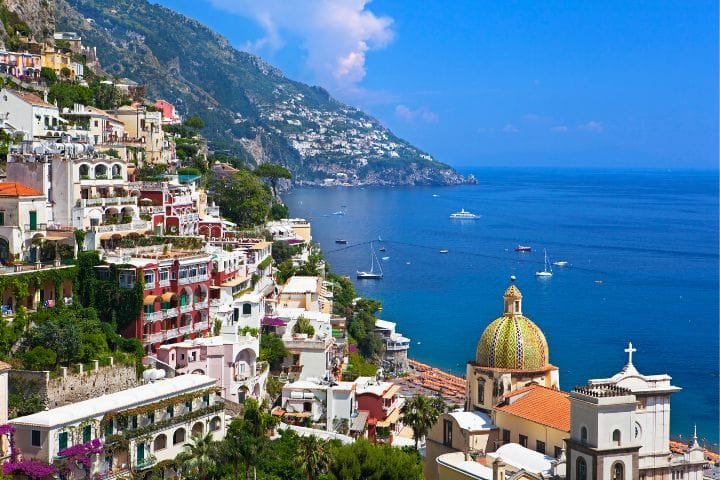
Arrival logistics from Naples airport can set the tone for your entire trip, so it’s worth getting this right. I always recommend the direct SITA bus from Naples airport to Sorrento, then connecting to the Positano bus – it’s affordable (about €10 total), reliable, and provides stunning coastal views during the final approach.
Private transfers cost €100-150 but eliminate luggage hassles and provide door-to-door service. Avoid rental cars for your first day – navigating the coastal road while jet-lagged and overwhelmed by the scenery is a recipe for stress.
Positano accommodation check-in should be strategic because this vertical village has serious luggage logistics. Most hotels offer porter services, but confirm this when booking. I prefer arriving in the afternoon when check-in is guaranteed and you have time to settle before evening activities.
First afternoon exploring Positano’s vertical village rewards jet lag with pure magic. Start at the top near the main bus stop and work your way down via the stepped streets. The descent takes you past boutique shops, ceramic workshops, and those Instagram-famous bougainvillea-draped staircases.
Don’t try to see everything on day one – jet lag and the constant up-and-down walking can be exhausting. Focus on getting oriented, finding a great café for afternoon coffee, and soaking in the atmosphere of this impossibly picturesque village.
Sunset aperitivo and dinner recommendations provide the perfect first-evening experience:
- Franco’s Bar: legendary sunset views and strong cocktails
- Le Tre Sorelle: intimate terrace dining with coastal views
- Da Adolfo: beachside dining if you’re feeling adventurous
- Hotel Poseidon terrace: elegant drinks with panoramic vistas
- Chez Black: celebrity-watching and people-watching central
Essential Positano photography timing matters because lighting dramatically affects this village’s beauty. Golden hour (one hour before sunset) transforms the pastel buildings into something magical, while early morning provides soft light without crowds.
Day 2: Positano Beaches and Coastal Adventures
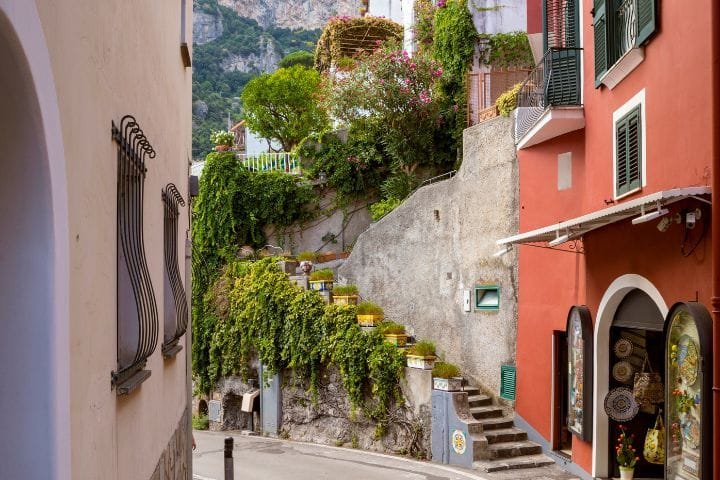
Spiaggia Grande and Fornillo Beach experiences offer completely different coastal vibes within walking distance of each other. Grande Beach buzzes with beach clubs, water taxis, and that classic Positano energy, while Fornillo provides more relaxed atmosphere with better swimming conditions.
Beach club prices at Spiaggia Grande run €25-40 for lounger and umbrella, but the people-watching and service justify the cost. Free beach areas exist but fill up quickly during peak season – arrive before 9 AM for the best spots.
Boat excursions to hidden coves and swimming spots offer access to coastlines that are impossible to reach by land. Half-day tours (€40-60 per person) typically include swimming stops at secluded beaches, snorkeling opportunities, and coastal views that showcase Positano from the water.
I particularly love the boat trips that include Grotta dello Smeraldo (Emerald Grotto) or stops along the coast toward Amalfi. The perspective from the water helps you appreciate just how dramatic this coastline really is.
Water sports and beach club options range from jet ski rentals to paddleboarding lessons. Most beach clubs offer equipment rental and instruction, while several operators provide guided kayaking tours that combine adventure with sightseeing.
Coastal hiking preview: Sentiero degli Dei can be sampled with a shorter walk from Positano toward Nocelle. This 45-minute uphill hike provides incredible views back toward Positano and serves as preparation for the full Path of the Gods hike later in the week.
Evening dining and nightlife in Positano tends to be sophisticated rather than wild. The focus is on excellent restaurants with romantic settings rather than clubs or bars. Dinner reservations are essential during peak season, especially for restaurants with the best views.
Day 2 essential experiences:
- Morning swim at Fornillo Beach for relaxed coastal vibes
- Afternoon boat excursion to hidden coves and grottos
- Sunset aperitivo at a clifftop bar with panoramic views
- Dinner at a restaurant specializing in fresh seafood
- Evening stroll through illuminated village streets
🏖️ Getting Around Positano by Car
Parking and access are limited — planning ahead saves time and stress.
- Learn how to avoid restricted streets and fines → How to Avoid ZTL Zones in Ital
- Understand Italian road signs before driving coastal roads → Italian Road Signs Explained
Day 3: Amalfi Town and Historical Discoveries
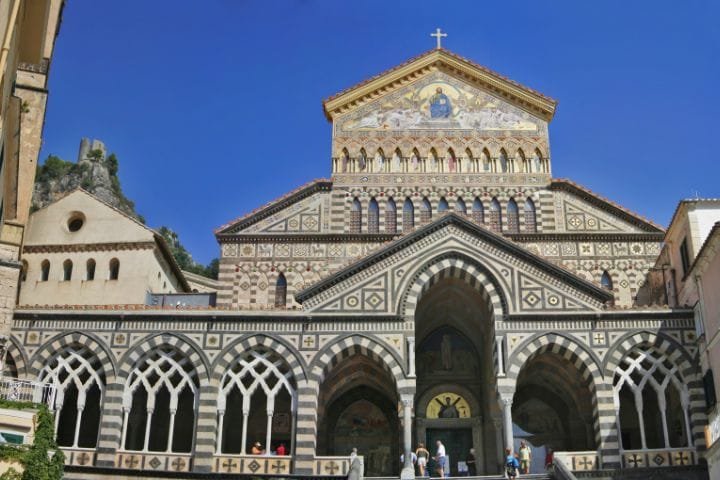
Morning transfer from Positano to Amalfi provides one of the world’s most scenic bus rides. The SITA bus winds along cliff-hugging roads with constant Mediterranean views – sit on the right side for the best coastal vistas during this 45-minute journey.
Alternatively, summer ferries between Positano and Amalfi offer spectacular views of the coastline from a water level perspective. The boat ride takes about 20 minutes and costs €8-12, providing completely different views than the coastal road.
Amalfi Cathedral and medieval architecture exploration showcase the town’s history as a powerful maritime republic. The cathedral’s Arab-Norman architecture reflects Amalfi’s medieval trading connections, while the adjoining abbey offers a peaceful respite from the busy streets.
Don’t miss the cathedral museum’s collection of medieval artifacts and the famous Tavola Amalfitana – maritime laws that governed Mediterranean trade for centuries. Entry costs €3 and provides fascinating insights into Amalfi’s golden age.
Paper museum and traditional craft discoveries highlight Amalfi’s role in bringing papermaking to Europe from the Arab world. The Museo della Carta, housed in a restored paper mill, demonstrates traditional techniques still used by local artisans.
The museum visit takes about 45 minutes and includes demonstrations of hand papermaking. You can purchase beautiful handmade paper products that make perfect souvenirs or gifts.
Valley of Mills hike and lemon grove visits offer escape from coastal crowds while showcasing the agricultural traditions that sustain local cuisine. The easy 2-hour hike follows ancient mule paths through terraced lemon groves and abandoned mills.
Local lemon producers often welcome visitors for informal tours and tastings of fresh lemons, limoncello, and lemon-based products. These family operations provide authentic insights into agricultural life that has continued for generations.
Evening accommodation transition and dining in Amalfi completes your base change while providing new perspectives on coastal cuisine. Amalfi’s restaurants tend to be more traditional and less touristy than Positano, with several excellent family-run trattorias serving authentic regional dishes.
Amalfi exploration highlights:
- Cathedral complex tour including museum and cloister
- Paper museum visit with traditional papermaking demonstration
- Valley of Mills hike through terraced lemon groves
- Traditional trattoria dinner featuring local seafood specialties
- Evening walk along the harbor and main piazza
Plan Your Trip with Our Favorite Booking Tools
Day 4: Ravello Gardens and Panoramic Views
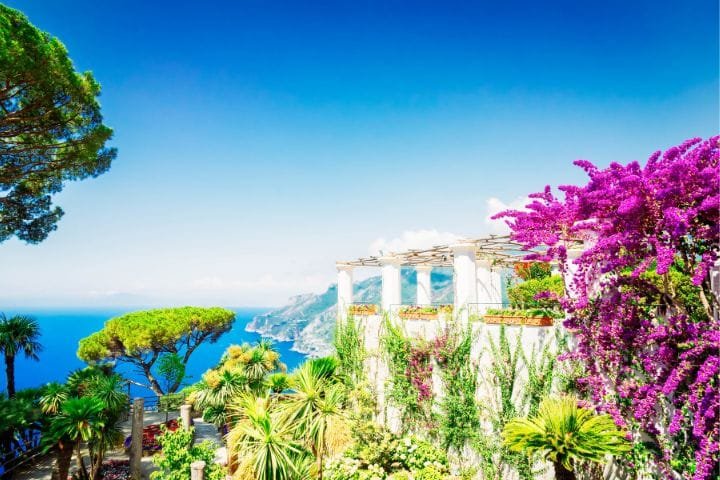
Day trip to Ravello from Amalfi base involves a scenic 30-minute bus ride climbing switchback roads to this hillside town famous for gardens and panoramic views. Buses run hourly, and I recommend departing early to maximize your time in this special place.
Ravello sits 365 meters above sea level, providing dramatically different perspectives of the coastline compared to seaside towns. The cooler temperatures and elevated position create a completely different atmosphere – more contemplative and artistic.
Villa Rufolo and Villa Cimbrone garden tours showcase two of Italy’s most spectacular gardens with completely different characters. Villa Rufolo features Moorish-influenced architecture and gardens that inspired Wagner, while Villa Cimbrone offers the famous “Terrace of Infinity” with breathtaking coastal panoramas.
Plan 2-3 hours total for both villas, including time to simply sit and absorb the incredible views. Entry fees are modest (€7-10 per villa) for experiences that rank among Europe’s most beautiful gardens.
Ravello Festival venues and cultural sites reflect the town’s reputation as a cultural center. Even if you’re not attending performances, the concert venues offer insights into Ravello’s artistic heritage and provide additional panoramic viewpoints.
The town’s main piazza, centered around the 11th-century cathedral, creates a perfect base for exploring Ravello’s compact historic center. Most major sites are within easy walking distance.
Panoramic dining with coastal views takes advantage of Ravello’s elevated position to showcase the coastline from dramatic perspectives. Several restaurants offer terraces with views that stretch from Positano to Salerno.
Lunch at restaurants like Rossellinis or Villa Maria provides fine dining with spectacular views, while more casual options still deliver incredible panoramas at more reasonable prices.
Golden hour photography opportunities in Ravello are legendary among photographers. The elevated position and western orientation provide perfect conditions for capturing the coastline bathed in warm evening light.
Ravello essential experiences:
- Villa Rufolo gardens and Wagner terrace exploration
- Villa Cimbrone “Terrace of Infinity” panoramic views
- Cathedral and historic town center wandering
- Panoramic lunch with coastline views
- Sunset photography from multiple elevated viewpoints
🌄 Reaching Ravello Safely by Car
Steep roads and narrow turns require confidence and preparation.
- Learn essential techniques for Italian mountain and hill roads → Driving in Italy: Complete Guide
- Seasonal considerations if visiting outside summer → Winter Driving in Italy: Complete Guide
Day 5: Hidden Gems – Furore, Conca dei Marini, and Cetara
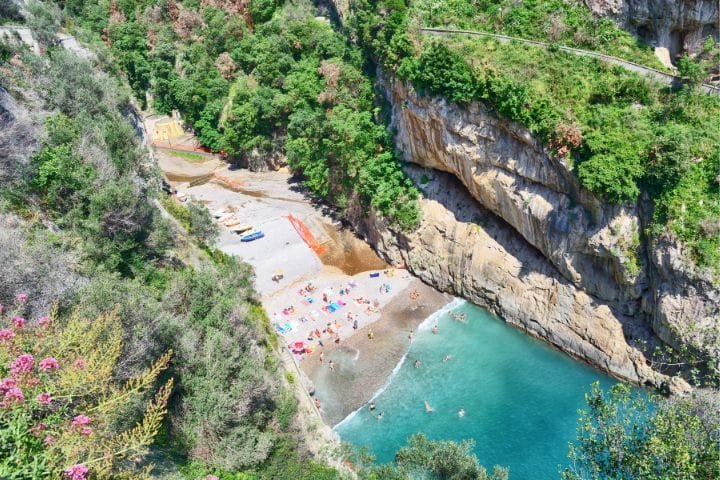
Furore Fjord and dramatic coastal scenery provide access to one of the coast’s most photographed locations. This narrow inlet carved into limestone cliffs creates a dramatic natural amphitheater that feels more like Norway than Italy.
The fjord is accessible by bus or boat, with walking trails that provide different perspectives of this geological marvel. Swimming is possible in calm conditions, though the rocky shoreline requires careful entry.
Conca dei Marini emerald grotto exploration offers underground adventure in a sea cave illuminated by ethereal blue-green light. Boat tours from Amalfi include grotto visits, or you can take local boats from Conca dei Marini itself.
The grotto visit takes about 15 minutes inside the cave, where guides explain the geological formations and light effects. It’s magical but can feel rushed during peak season when boats arrive frequently.
Cetara fishing village and authentic dining provide the coast’s most authentic fishing village experience. This small town remains largely unchanged by tourism, with working fishing boats and restaurants serving the coast’s freshest seafood.
Cetara specializes in anchovies and tuna, with several restaurants offering these local specialties prepared using traditional methods. The town’s relaxed atmosphere provides perfect contrast to more touristic coastal destinations.
Local food specialties: anchovies and seafood showcase Cetara’s maritime heritage through cuisine that remains largely unchanged by tourism. Family restaurants serve dishes that fishermen have enjoyed for generations.
Don’t miss the anchovy colatura (essence) that’s produced only in Cetara using methods dating back to Roman times. This intensely flavored liquid gold transforms simple pasta into extraordinary cuisine.
Today, off-the-beaten-path coastal experiences offer authentic encounters with local culture, away from the main tourist flows. These smaller towns reveal daily life that continues largely unchanged despite nearby tourism pressures.
Hidden gems exploration highlights:
- Furore Fjord’s dramatic scenery and swimming opportunities
- Emerald Grotto boat tour and cave exploration
- Cetara’s authentic fishing village atmosphere
- Traditional seafood lunch featuring local anchovy specialties
- Quiet coastal walks away from tourist crowds
Day 6: Adventure Day – Hiking and Island Excursions
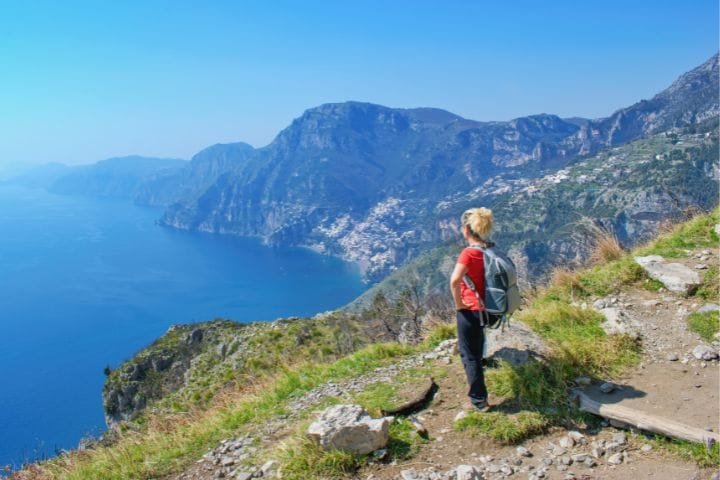
Sentiero degli Dei (Path of the Gods) full hike represents the coast’s most spectacular hiking experience. This 7.8-kilometer trail from Bomerano to Nocelle provides constant panoramic views while following ancient mule paths carved into cliffsides.
The hike takes 3-4 hours with stops for photography and requires moderate fitness due to rocky terrain and elevation changes. Start early (8 AM) to avoid afternoon heat and ensure completion before buses stop running.
Weather conditions significantly affect trail safety and enjoyment. Avoid hiking during rain or high winds, and always carry water, snacks, and basic first aid supplies. The trail has limited shade, making sun protection essential.
Alternative: Capri day trip by ferry provides completely different coastal experiences for travelers preferring island exploration to hiking adventures. Fast ferries from Amalfi reach Capri in 45 minutes, allowing full-day island exploration.
Capri offers the famous Blue Grotto, chairlift rides to Monte Solaro, upscale shopping in Capri town, and the quieter atmosphere of Anacapri. Return ferries run until evening, providing flexibility for island exploration.
Active adventures and outdoor experiences can include combination activities like hiking plus swimming, boat tours with snorkeling stops, or guided nature walks focusing on local flora and geology.
Several operators offer guided experiences that combine multiple activities, providing expert local knowledge while ensuring safety on more challenging adventures.
Recovery time and spa options become important after active adventure days. Many hotels offer spa services, while several dedicated wellness centers provide massage and relaxation treatments perfect after hiking or extensive sightseeing.
Celebratory dinner at signature restaurant caps your adventure day with memorable dining experiences. This is the perfect evening for splurging on a restaurant with spectacular views and exceptional cuisine.
Adventure day options:
- Full Sentiero degli Dei hike with panoramic coastal views
- Capri island exploration including Blue Grotto and shopping
- Combination boat tour and hiking excursion
- Spa treatments and relaxation after active adventures
- Signature restaurant dinner celebrating week’s adventures
Day 7: Final Explorations and Departure
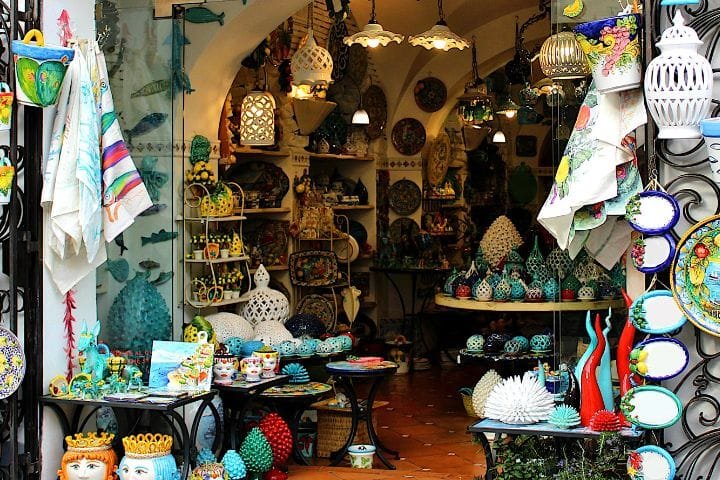
Morning in remaining unexplored towns provides last opportunities for new discoveries. Consider visiting Scala (Europe’s oldest republic), Atrani (Italy’s smallest municipality), or Maiori/Minori for different coastal perspectives.
These final explorations work best when kept relaxed and flexible, allowing time for spontaneous discoveries without the pressure of completing extensive sightseeing lists.
Last-minute shopping and souvenir hunting can focus on items unique to the Amalfi Coast. Ceramics from local artisans, limoncello from family producers, and handmade paper from Amalfi create meaningful mementos of your week.
Local markets offer regional food products like preserved lemons, anchovy colatura, and artisanal pasta that transport Amalfi Coast flavors home. Quality varies dramatically, so shop at recommended retailers.
Departure logistics and transportation planning should account for traffic delays and seasonal schedule changes. Allow extra time for transfers, especially during peak season when roads become congested with tourist traffic.
Confirm departure times for buses, ferries, or private transfers, and have backup plans for potential delays. The coastal road can experience significant traffic that affects all transportation schedules.
Optional extensions to Rome, Naples, or other destinations can extend your Italian adventure seamlessly. High-speed trains from Naples reach Rome in 70 minutes, while Naples itself offers incredible cuisine and archaeological treasures.
Final coastal views and memories deserve time for quiet reflection on experiences that will likely inspire future Mediterranean adventures. The week’s memories, photographs, and stories provide lasting connections to this extraordinary coastline.
Departure day essentials:
- Flexible timing allowing for spontaneous final discoveries
- Souvenir shopping focused on authentic local products
- Confirmed transportation with backup plans for delays
- Final coastal photography capturing week’s memories
- Reflection time processing incredible experiences
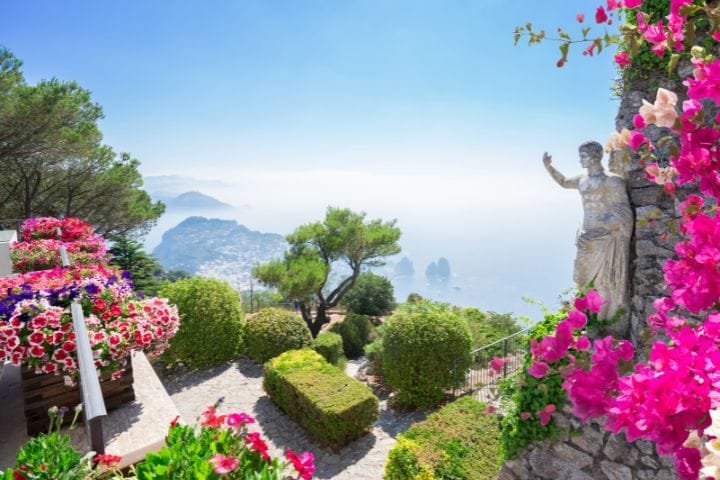
Where to Stay: Best Accommodation by Location
Luxury hotels with spectacular views provide unforgettable accommodation experiences that become integral parts of your Amalfi Coast adventure. Properties like Le Sirenuse (Positano), Hotel Santa Caterina (Amalfi), and Hotel Caruso (Ravello) offer world-class service with postcard-perfect settings.
These luxury properties typically include premium amenities like infinity pools, Michelin-starred restaurants, spa services, and concierge assistance that can arrange exclusive experiences throughout the coast.
Boutique properties with authentic charm offer more intimate experiences while maintaining high quality and unique character. Family-run hotels often provide personal service and local insights that larger properties cannot match.
Properties like Hotel Poseidon (Positano), Villa Amore (Ravello), and Hotel Marina Riviera (Amalfi) combine comfort with authentic local atmosphere and reasonable pricing.
Mid-range options with great value provide comfortable accommodation without luxury pricing. These properties typically offer essential amenities, good locations, and reliable service at prices that leave more budget for dining and activities.
Look for properties with air conditioning, Wi-Fi, breakfast included, and convenient transportation access. Location becomes crucial at this price range – proximity to bus stops and main attractions saves time and money.
Budget-friendly accommodations and hostels allow extended stays or provide savings that enable splurging on dining and activities. Several hostels cater specifically to international travelers seeking affordable coastal experiences.
Booking strategies for peak and shoulder seasons significantly affect both availability and pricing. Peak season (June-August) requires booking 3-6 months in advance, while shoulder seasons (April-May, September-October) offer better rates with similar weather.
Accommodation selection factors:
- Location proximity to transportation and attractions
- Views and outdoor space (terraces, balconies, pools)
- Included amenities (breakfast, Wi-Fi, air conditioning)
- Seasonal pricing variations and minimum stay requirements
- Guest reviews focusing on service quality and local knowledge
Transportation and Logistics
Getting to the Amalfi Coast from major airports involves multiple options with different cost and convenience factors. Naples airport provides closest access, while Rome’s airports offer more international flight options.
From Naples airport, SITA buses provide direct service to Sorrento with connections to coastal towns. Total journey time runs 90-120 minutes depending on destination, with costs around €10-15 per person.
SITA bus system and local transportation form the backbone of coastal public transportation. Buses run regularly between major towns, though summer schedules can be disrupted by traffic and overcrowding.
Purchase day passes or weekly passes for better value if using buses frequently. Be prepared for crowded conditions during peak season and potential delays during busy periods.
Private transfers and taxi services eliminate public transportation hassles but cost significantly more. Expect €100-150 for airport transfers and €30-50 for shorter coastal journeys between towns.
Licensed taxi services offer fixed rates for standard routes, while private drivers can be arranged through hotels or local operators for customized itineraries.
Rental car considerations and parking challenges require careful evaluation of benefits versus complications. The coastal road offers spectacular scenery but challenging driving conditions, while parking in coastal towns is extremely limited and expensive.
Rental cars work best for exploring inland areas or extending trips beyond the main coastal corridor. For coast-focused itineraries, public transportation usually provides better value and less stress.
Ferry connections between coastal towns operate seasonally (typically April-October) and provide scenic alternatives to road transportation. Routes connect major towns with reliable schedules and reasonable pricing.
Ferry travel offers spectacular water-level views of the coastline impossible to achieve from roads, plus elimination of traffic delays that can affect bus schedules.
Transportation planning essentials:
- Advance research of schedules and seasonal variations
- Backup transportation plans for potential delays or disruptions
- Budget allocation balancing cost versus convenience
- Luggage considerations for public transportation use
- Local transportation apps and real-time schedule information
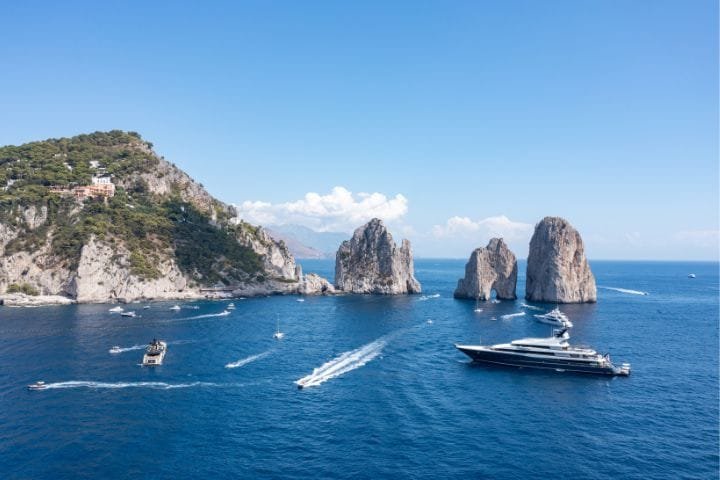
🚘 Driving vs Public Transport on the Amalfi Coast
Choosing the right transport style can define your experience.
- Detailed breakdown of driving challenges and alternatives → Is It Worth Driving the Amalfi Coast?
- Rental car considerations for southern Italy → Best Car Rental Companies in Italy for Foreigners
Food and Dining Experiences
Must-try local specialties and regional dishes showcase the coast’s unique position between mountains and sea. Seafood dominates menus, with preparations that highlight fresh ingredients and simple cooking techniques that have developed over centuries.
Essential dishes include spaghetti alle vongole (clams), fresh mozzarella from local producers, sfogliatelle pastries, and of course, fresh fish prepared with local herbs and lemon. Each town has specialties reflecting local traditions and available ingredients.
Restaurant recommendations by price range span from simple trattorias serving excellent local cuisine to michelin-starred establishments offering refined interpretations of regional traditions.
Budget-conscious travelers can eat well at family-run trattorias and pizzerias, while special occasion dining at renowned restaurants provides unforgettable culinary experiences with spectacular settings.
Cooking classes and food experiences offer hands-on learning about regional cuisine while providing cultural insights into local traditions. Several operators offer classes that include market visits, cooking instruction, and meals featuring prepared dishes.
These experiences typically last 3-4 hours and include recipes to recreate dishes at home. Classes often focus on pasta making, seafood preparation, and traditional desserts.
Local markets and food shopping provide opportunities to interact with local producers while purchasing authentic regional products. Markets operate on specific days and offer seasonal produce, local cheeses, cured meats, and specialty items.
Shopping at markets requires some Italian language skills and understanding of local customs, but provides authentic cultural experiences and excellent value for quality products.
Wine tasting and limoncello experiences showcase local production of wines adapted to coastal conditions and the famous lemon liqueur that represents the coast’s signature beverage.
Several producers offer tours and tastings that explain production methods while showcasing different styles and quality levels. These experiences typically include light snacks and last 1-2 hours.
Culinary experience highlights:
- Fresh seafood at traditional coastal trattorias
- Cooking classes featuring regional specialties and techniques
- Market visits with local producers and seasonal ingredients
- Wine and limoncello tastings at family operations
- Fine dining experiences combining cuisine with spectacular views
Plan Your Trip with Our Favorite Booking Tools
Practical Tips and Seasonal Considerations
Best times to visit for weather and crowds significantly affect both enjoyment and costs. Late spring (May) and early fall (September-October) provide ideal weather with manageable crowds and better accommodation rates.
Summer (June-August) offers warmest weather and longest days but brings peak crowds, highest prices, and intense heat that can limit hiking and extensive sightseeing.
Packing essentials for coastal adventures should account for varied activities from beach time to hiking, plus evening dining at upscale restaurants. Versatile clothing that transitions from casual to elegant works best.
Essential items include comfortable walking shoes, sun protection, swimwear, light layers for air conditioning and evening breezes, and at least one outfit suitable for fine dining.
Budget planning and cost expectations help prevent financial surprises during your week-long adventure. Accommodation and dining represent the largest expenses, with significant variations based on choices and seasons.
Daily budgets can range from €100-150 for budget travelers to €300+ for luxury experiences. Transportation, activities, and shopping add to base accommodation and dining costs.
Photography tips for capturing coastal beauty take advantage of the dramatic lighting conditions and spectacular scenery. Golden hour provides the most flattering light for both landscapes and portraits.
Popular viewpoints can become crowded during peak photo times, so arriving early or staying late often provides better shooting conditions with fewer people.
Safety considerations and emergency contacts become important when hiking coastal trails or swimming in open water. Italian emergency services (112) operate efficiently, but preventing problems through preparation is always better.
Ocean conditions can change rapidly, making swimming dangerous even at popular beaches. Always observe local conditions and heed warnings from lifeguards or local authorities.
Essential planning considerations:
- Seasonal weather patterns and crowd levels
- Flexible itinerary allowing for weather-dependent activities
- Budget allocation across accommodation, dining, and experiences
- Safety preparations for hiking and water activities
- Emergency contact information and basic Italian phrases
📅 Best Time & Safety Tips for Amalfi Coast Road Trips
Traffic, heat, and crowds vary dramatically by season.
- Learn how summer heat affects driving in southern Italy → Driving in Italy During Summer Heatwave
- Understand the best seasons for an Italy road trip → Best Time for an Italy Road Trip
Creating Your Perfect Amalfi Coast Week
After countless visits and extensive exploration of this extraordinary coastline, I can tell you that the magic of the Amalfi Coast lies not just in its famous beauty, but in those perfect moments when dramatic scenery combines with authentic cultural experiences and genuine hospitality.
A well-planned week provides enough time to move beyond the obvious tourist attractions and discover the rhythms, flavors, and traditions that make this coastline truly special.
The key insight that transformed my approach to Amalfi Coast travel was realizing that this isn’t a destination to rush through checking off attractions. Instead, it rewards travelers who embrace the slower Mediterranean pace, allowing time for spontaneous discoveries, extended meals with coastal views, and conversations with locals who share insights into their remarkable homeland.
My current strategy for week-long visits involves balancing structured sightseeing with flexible time for serendipitous discoveries. Some of my most treasured Amalfi Coast memories come from unplanned encounters – sharing wine with a local fishing family in Cetara, discovering a hidden swimming cove accessible only by boat, or watching sunset from a clifftop café that became my evening ritual.
Plan thoughtfully but remain flexible, embrace both popular attractions and hidden discoveries, and prepare for a week that will forever change how you think about Mediterranean coastal travel. The Amalfi Coast awaits your discovery – approach it with curiosity, appetite, and time to truly savor one of the world’s most spectacular coastlines!
FAQs on Amalfi Coast 7-Day Itinerary
Is 7 days enough to explore the Amalfi Coast?
Yes! A 7-day itinerary gives you plenty of time to explore famous towns like Positano, Amalfi, and Ravello, while also visiting hidden gems, beaches, and scenic drives without feeling rushed.
What’s the best way to get around the Amalfi Coast for a 7-day trip?
You can combine driving, ferries, and local buses. Driving offers flexibility, but parking is limited. Ferries and buses help you avoid traffic and enjoy the coastline from the water.
When is the best time for a 7-day Amalfi Coast trip?
Late spring (May–June) and early fall (September–October) are ideal. You’ll enjoy warm weather, fewer crowds compared to peak summer, and lower accommodation prices.
Do I need to book hotels in advance for a week-long Amalfi Coast trip?
Yes! Especially during the high season. Booking in advance ensures the best choices for accommodations with sea views, parking options, and convenient locations.
Can I include Capri or Pompeii in a 7-day Amalfi Coast itinerary?
Absolutely! Many travelers add a day trip to Capri by ferry or visit Pompeii from Sorrento as part of their week-long adventure.
🚗 Plan Smarter: Amalfi Coast Driving Resources
- Decide if driving the Amalfi Coast is right for you → Is It Worth Driving the Amalfi Coast?
- Avoid fines and restricted zones → Italy ZTL Zones Driving Guide
- Use the best apps for coastal navigation → Best Navigation Apps for Italy
💬 We’d love to hear from you!
Have questions, tips, or personal travel stories to share? Drop them in the comments below — your insights help fellow travelers plan their adventures too.



